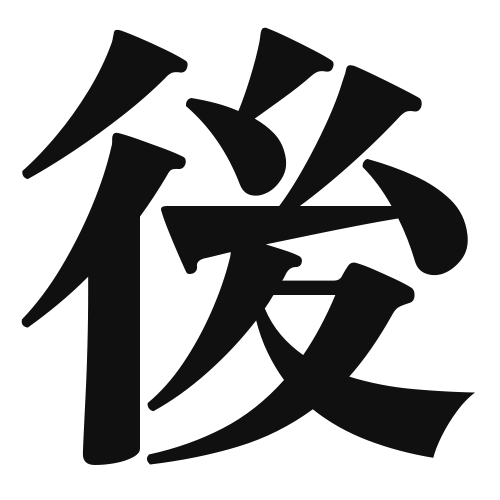1. Overview of Meaning
The kanji “後” (pronounced “ato” or “go”) primarily means “after” or “behind.” It is used to indicate a position in time or space that comes after something else.
2. Formation and Radical
Formation of the Kanji: The kanji “後” is a compound character that combines elements to convey its meaning. It is derived from the concept of something being behind or following another.
Radical: The radical for “後” is “口” (kuchi), which means “mouth.” This radical is often associated with speech or communication, adding a layer of meaning to the kanji.
3. Examples of Usage
Common Words and Phrases: Some frequently used words that include “後” are:
- 後ろ (ushiro) – behind
- 後日 (gojitsu) – later date
- 午後 (gogo) – afternoon
Example Sentences in Daily Conversation:
- 会議は後で始まります。 (Kaigi wa ato de hajimarimasu.) – The meeting will start later.
- 彼は後ろにいます。 (Kare wa ushiro ni imasu.) – He is behind.
4. Synonyms and Antonyms
Similar Kanji: A similar kanji is “前” (mae), which means “before” or “in front.” The difference lies in their positional context: “後” refers to what comes after, while “前” refers to what comes before.
Opposite Kanji: The antonym of “後” is “前” (mae), as mentioned above, highlighting the contrast between the concepts of “after” and “before.”
5. Cultural and Historical Background
Relation to Japanese Culture: The concept of time and sequence is significant in Japanese culture, where understanding the order of events is essential. The kanji “後” reflects this cultural emphasis on timing.
Proverbs and Idioms: One common saying is “後の祭り” (ato no matsuri), which translates to “after the festival,” meaning it is too late to take action or participate in something that has already passed.
